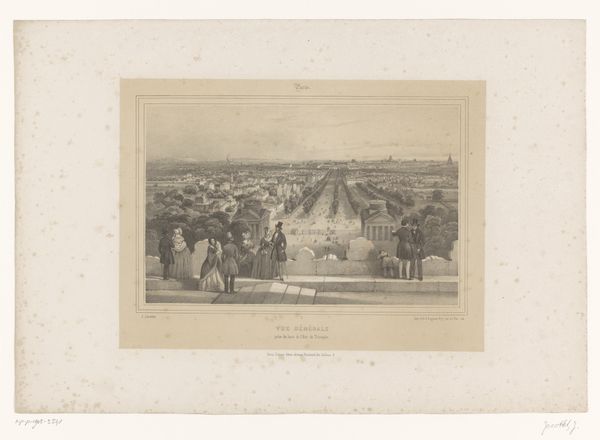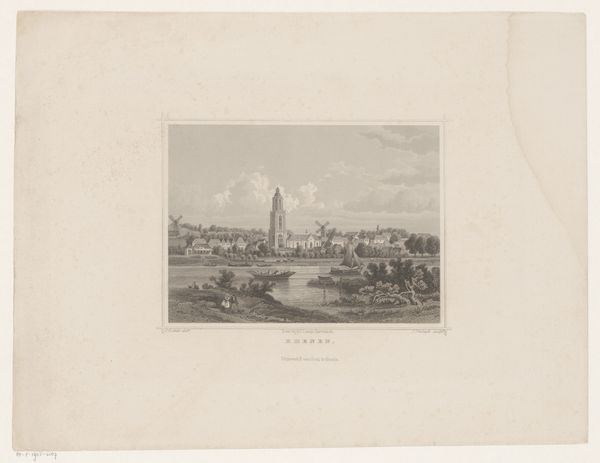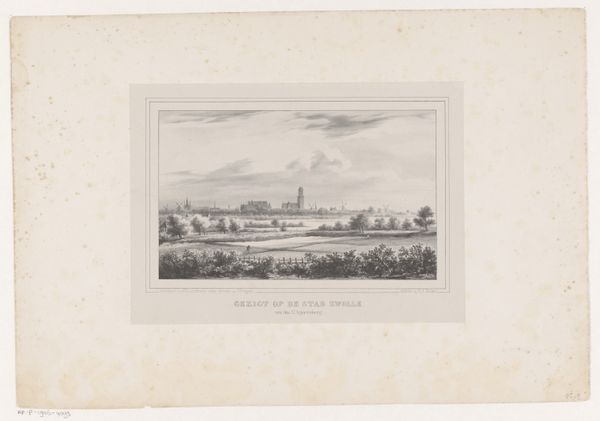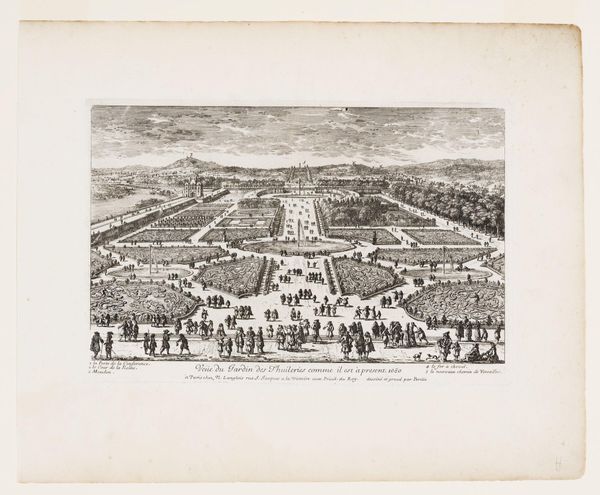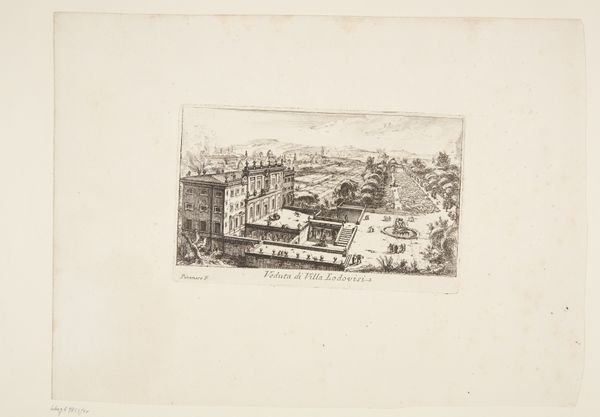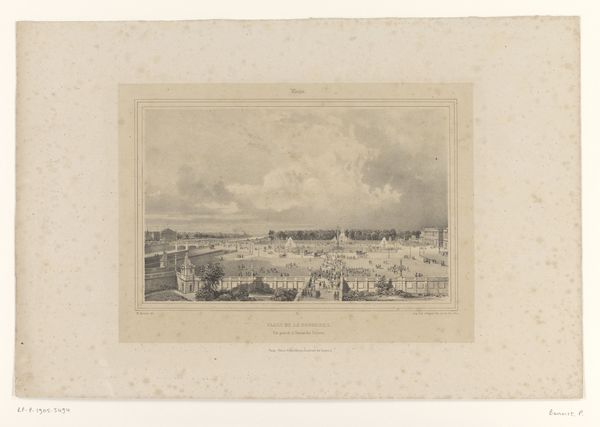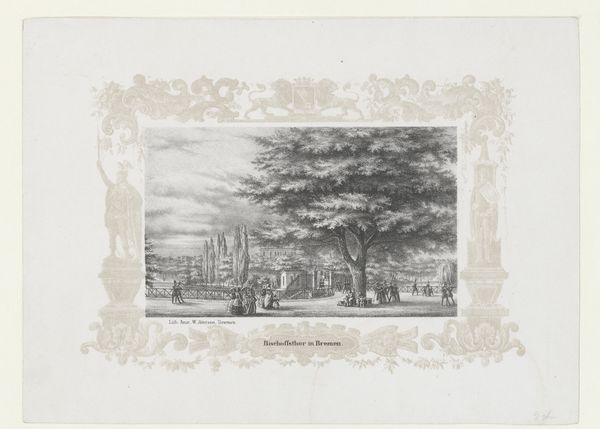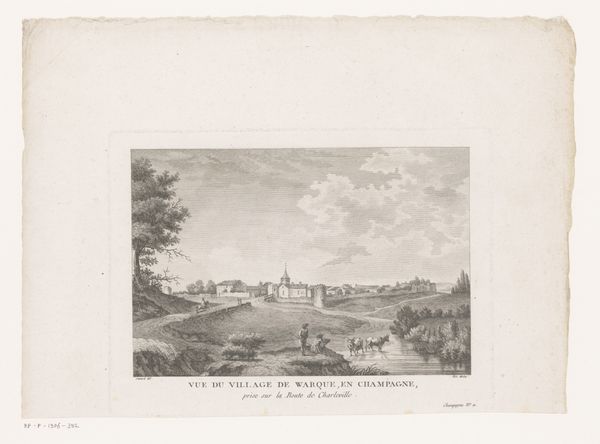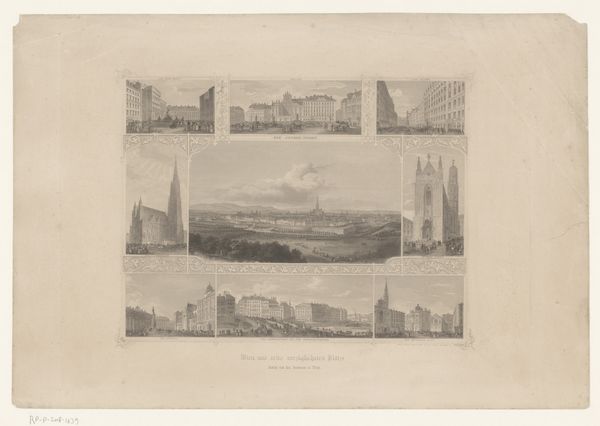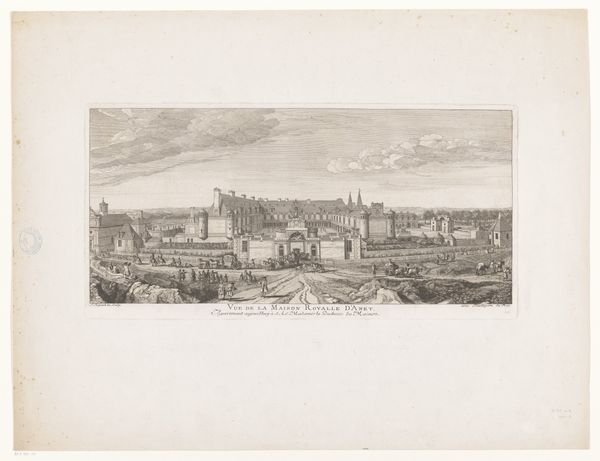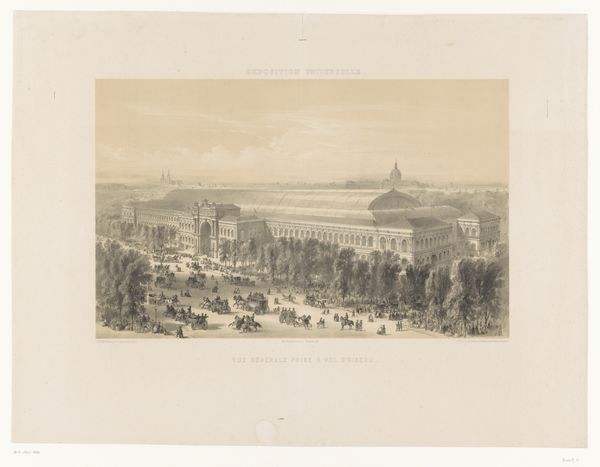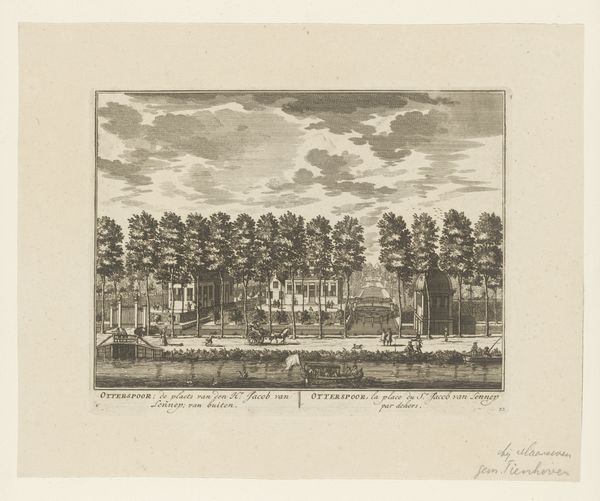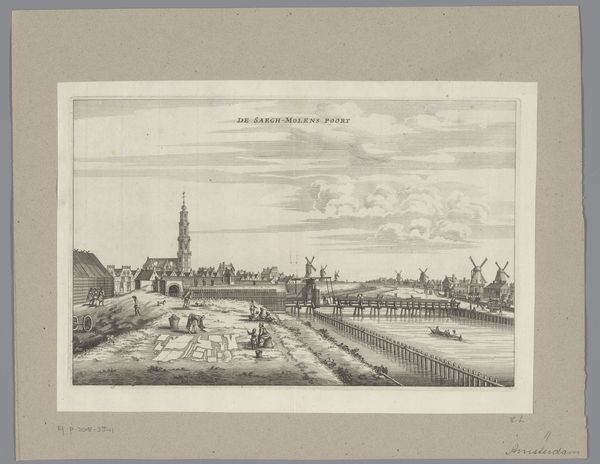
print, etching, graphite, engraving
#
light colour palette
#
neoclassicism
# print
#
etching
#
landscape
#
repetition of white
#
white palette
#
graphite
#
cityscape
#
repetition of white colour
#
engraving
Dimensions: height 514 mm, width 632 mm
Copyright: Rijks Museum: Open Domain
Curator: Today, we’re looking at John Bachmann’s, “Zicht op de Place de la Concorde in Parijs,” a print dating from around 1840, executed with graphite, etching and engraving techniques. Editor: My first impression is of a muted, almost ghostly cityscape, populated by tiny figures. It feels detached, almost dreamlike, despite its meticulous detail. Curator: Indeed. Bachmann has employed a rather limited tonal range. Note how the repetition of white serves to flatten the perspective, almost as though he were deliberately eschewing depth in favor of pattern. This compositional choice arguably reflects the influence of neoclassicism, an aesthetic movement defined by order and reason, against the tumultuous backdrop of post-revolutionary France. Editor: It’s a fascinating tension, this neoclassicism. Place de la Concorde—the very site where revolutionary fervor led to public executions, most notably Marie Antoinette's—is rendered with such sanitized detachment. It speaks volumes about the attempts to suppress collective trauma through visual representation and the elite’s desire to enforce stability at the time, yet I can’t help but notice the bustling crowds that signify a vibrant, restored public life. The presence of these individuals—albeit represented as visually simplified forms—cannot be ignored. What does this tell us about power structures embedded in such an intentional form of civic design? Curator: I concede there’s a distinct social reading here. The meticulousness of the lines directs our attention to a rational urban space, devoid of the revolutionary chaos which occurred not too long before its creation. The use of hatching and cross-hatching certainly generates an illusion of three-dimensionality, yet the light palette subdues its emotional intensity. We are presented with a spectacle observed from afar, processed by thought and not visceral engagement. Editor: The absence of dramatic shadow and the careful articulation of detail feel intentional. I am just wondering about that distance, the gaze, who does that kind of perspective represent and what can it tell us about social dynamics between various citizens co-existing within a newly reformed civic arena. This print is not simply a representation; it’s an active participant in constructing a very specific narrative. Curator: I suppose ultimately this artwork is not merely a visual depiction, but an essay about order, memory, and the subtle workings of representation itself. Editor: And in the case of Bachmann's print, also the selective narration of national identity and historical memory. It underscores art’s inevitable role in shaping collective understanding.
Comments
No comments
Be the first to comment and join the conversation on the ultimate creative platform.

